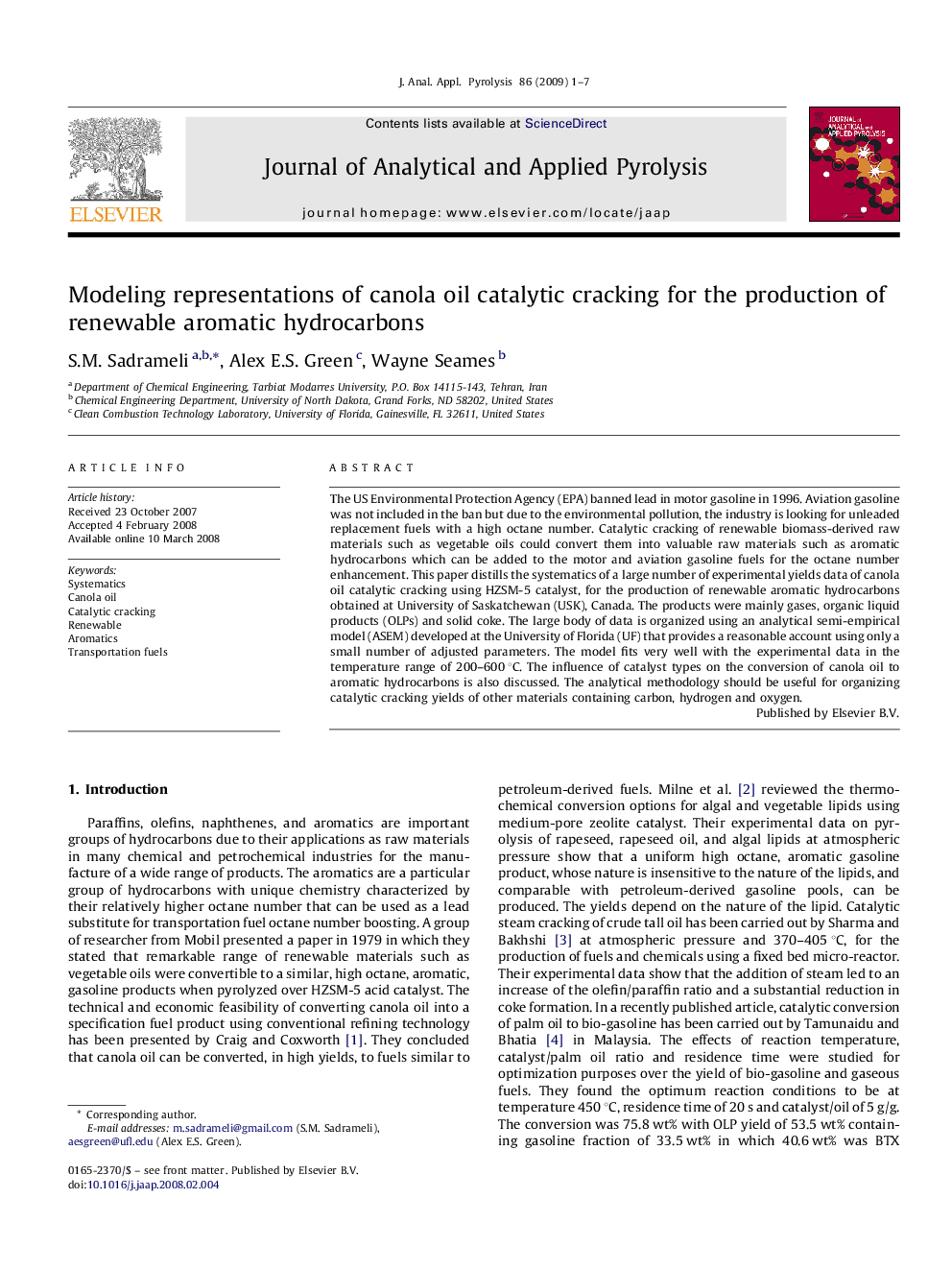| Article ID | Journal | Published Year | Pages | File Type |
|---|---|---|---|---|
| 1198555 | Journal of Analytical and Applied Pyrolysis | 2009 | 7 Pages |
The US Environmental Protection Agency (EPA) banned lead in motor gasoline in 1996. Aviation gasoline was not included in the ban but due to the environmental pollution, the industry is looking for unleaded replacement fuels with a high octane number. Catalytic cracking of renewable biomass-derived raw materials such as vegetable oils could convert them into valuable raw materials such as aromatic hydrocarbons which can be added to the motor and aviation gasoline fuels for the octane number enhancement. This paper distills the systematics of a large number of experimental yields data of canola oil catalytic cracking using HZSM-5 catalyst, for the production of renewable aromatic hydrocarbons obtained at University of Saskatchewan (USK), Canada. The products were mainly gases, organic liquid products (OLPs) and solid coke. The large body of data is organized using an analytical semi-empirical model (ASEM) developed at the University of Florida (UF) that provides a reasonable account using only a small number of adjusted parameters. The model fits very well with the experimental data in the temperature range of 200–600 °C. The influence of catalyst types on the conversion of canola oil to aromatic hydrocarbons is also discussed. The analytical methodology should be useful for organizing catalytic cracking yields of other materials containing carbon, hydrogen and oxygen.
